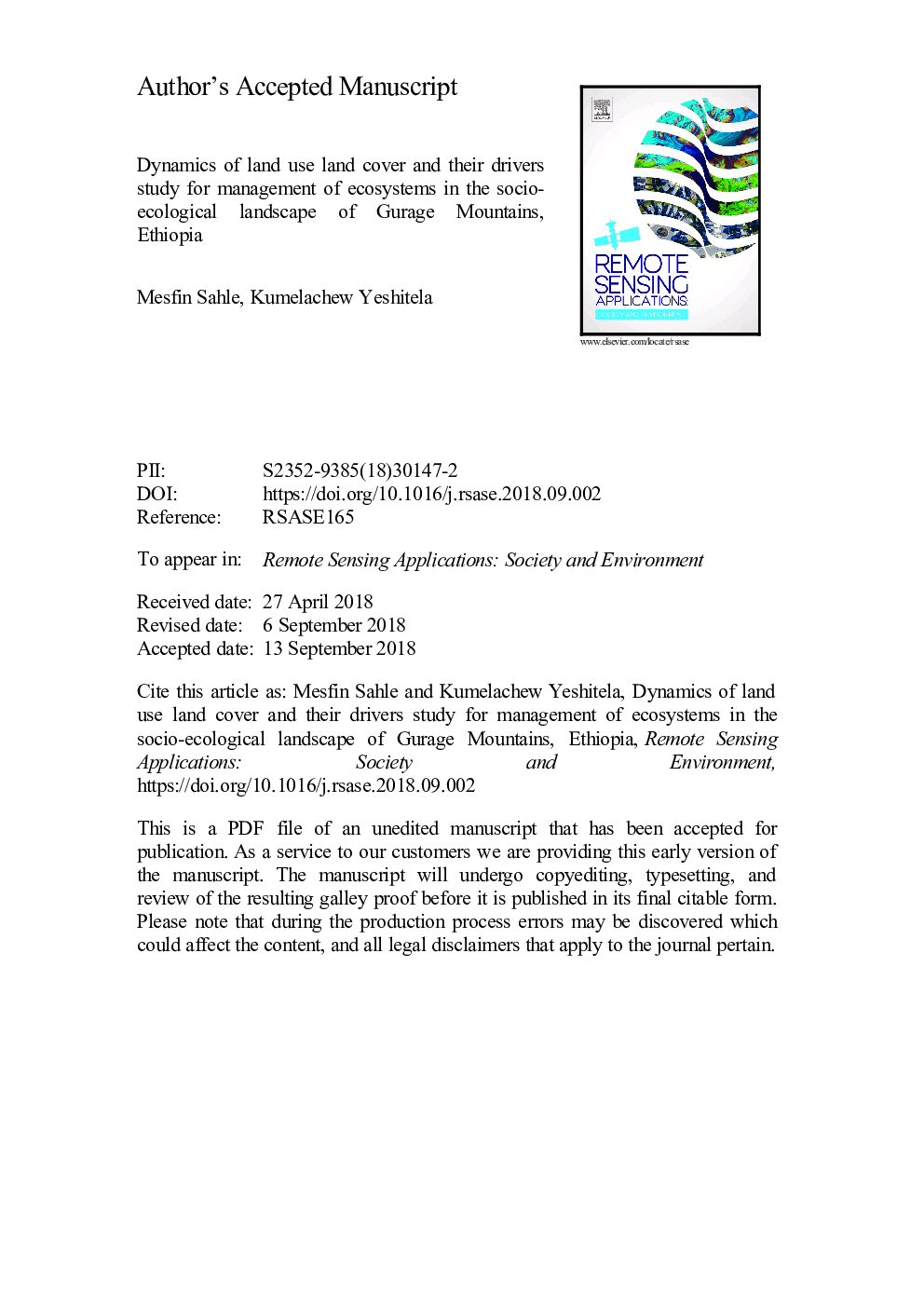| Article ID | Journal | Published Year | Pages | File Type |
|---|---|---|---|---|
| 10113952 | Remote Sensing Applications: Society and Environment | 2018 | 23 Pages |
Abstract
This study analyzed the land use and land cover (LULC) dynamics with their main driving factors for management of ecosystems in the socio-ecological landscape of Wabe River catchment in Gurage Mountains, Ethiopia. The study used 1986, 2000, and 2017 Landsat satellite images to detect trends, and group discussions with local experts to identify and describe the drivers of changes. Digital satellite image processing and accuracy assessment were conducted using ERDAS Imagine software. The result shows that there has been a dynamics of LULC between 1986 and 2017. The rate of change was higher from 1986 to 2000 than from 2000 to 2017. While forest and Afro-alpine vegetation decreased at the highest rate, shrub land and cereal crop land increased in reverse. Large parts of grazing land were converted to cereal crop land. The change of LULC was higher in cool agro-ecology areas than warm and humid agro-ecology areas. These changes were produced as the result of direct and indirect drivers. This study through satellite images based land use change analysis acquired a solid information on the status of ecosystem in the catchment which is required for many aspects of land use planning and policy development. Thus, efforts are needed to manage the Wabe River catchment through well integrated landscape planning based on the information derived in this study to address the effects of drivers and to reduce the deterioration of natural resources.
Related Topics
Physical Sciences and Engineering
Earth and Planetary Sciences
Computers in Earth Sciences
Authors
Mesfin Sahle, Kumelachew Yeshitela,
